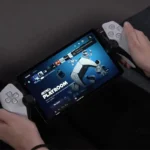My Mistakes in Owning the Wrong OLED Monitor. Choose carefully between QD-OLED and WOLED monitors to ensure you select the right OLED monitor.

Not all OLED monitors are created equal. Their performance can vary depending on the lighting conditions of your room, with some excelling more in darker or brighter environments than others. So, it’s important to be careful before purchasing one for gaming, work tasks, or media viewing activities.
There are two types of OLED panels to choose from: QD-OLED and WOLED
Today, numerous brands offer OLED monitors; however, LG Display and Samsung Display are the sole companies producing all these OLED panels. LG produces WOLED panels, while QD-OLED variants originate from Samsung’s production line.
PC peripheral manufacturers purchase OLED panels from these companies and customize them to meet their own specifications, making changes in areas such as monitor design and software. But what sets LG’s WOLED apart from Samsung’s QD-OLED?
While both panels offer the typical benefits of OLED technology, they are manufactured differently because of variations in their panel composition and subpixel structure.
LG’s WOLED technology utilizes an OLED layer to produce white light and features an additional subpixel for white alongside the standard red, green, and blue. On the other hand, QD-OLEDs consist of a blue-emitting OLED layer that passes through a Quantum Dot coating. This coating adjusts the wavelengths for the red and green subpixels.
As a result, you might notice minor differences in the image and color display between these two screens. However, when it comes to monitors, it’s important to focus on more substantial disparities that we will discuss shortly.
LG’s WOLED panels feature a matte coating
Currently, all OLED panels using LG’s WOLED technology feature a matte screen coating. This has elicited mixed reactions from customers, as the coating negatively impacts picture quality and contrast ratio—an undesirable outcome for OLED displays.
LG’s matte screen coating can sometimes cause the picture to appear grainy due to its abrasiveness.
LG’s matte coating has several benefits, including its capacity to reduce reflections in well-lit environments like studios. This advantage surpasses that of monitors using Samsung QD-OLED panels, which often reflect any light source directly in front of the screen.
In the end, choosing an OLED monitor type hinges on where you plan to use it. If you’re setting up in a room with controlled lighting conditions, go for QD-OLED as grain coating won’t be a concern. Otherwise, WOLED might better suit your needs.
Samsung’s QD-OLED panels display a magenta hue.
Although I prefer Samsung’s glossy QD-OLED panels, they aren’t without their flaws. A notable issue is the presence of a magenta tint, which becomes particularly noticeable when there are light sources in front of the monitor. This problem stems from the lack of a polarizing layer in their panel structure, allowing ambient lighting to reflect off them directly.
When viewing dark content on a QD-OLED monitor in a well-lit area, the blacks may not appear truly black even when each pixel is turned off. Moreover, the bezel of this display type might stand out more than expected for an OLED screen experience. In contrast, LG’s WOLED panels avoid these problems thanks to their matte coating that reduces reflections.
When placed behind the monitor, light sources may be perceived as a magenta tint and often blend into low-light environments similar to WOLED displays in terms of darkness.
QD-OLED monitors offer a modest enhancement in text clarity
Both types of OLED monitors experience text clarity problems, particularly when used with Windows. This is because traditional LCD displays, which use RGB stripe subpixel layouts, are more compatible with the subpixel text rendering technique employed by Windows.
Unfortunately, the subpixel arrangements of QD-OLED and WOLED panels differ.
For incorrect OLED monitors, WOLED screens use an RGBW stripe layout, while QD-OLED displays feature triangular RGB subpixels. These different configurations deviate from the standard RGB stripe design, which might result in lower text clarity compared to a traditional LCD monitor.
When using a QD-OLED monitor, you might notice color fringing on text, with green outlining at the top and pink outlines appearing toward the bottom. This effect becomes more pronounced as you move closer to the screen and is especially noticeable when viewing in 1440p resolution compared to 4K. On the other hand, WOLED monitors tend to display some shadowing along both edges of any given body of text.
In my experience, the shadowing on my WOLED monitor was not to my liking. Moreover, the QD-OLED display excels with smaller text sizes. That said, Samsung and LG have been working on enhancing text clarity in their latest OLED panel technology.
In my present collection of Alienware monitors, I have the AW3423DW model with a first-gen QD-OLED panel and the AW2725DF, which boasts a newer third-gen panel.
Which Brands Sell QD-OLED and WOLED Monitors?
Which OLED Monitor Best Suits Your Needs?
Are you still struggling to decide between QD-OLED and WOLED monitors? Let me make it easier for you.
If you’re using your computer in a dimly lit or dark environment without additional lighting, like 3D light panels before the monitor, it’s advisable to confidently invest in a QD-OLED monitor.
The inherent magenta tint of the OLED monitor will likely go unnoticed, while its glossy screen enhances images to maintain their crystal-clear quality.
This screen features a matte coating that minimizes glare, providing clear visibility even in well-lit settings. However, it’s best not to sit too close to avoid noticing any graininess from the anti-glare layer.

